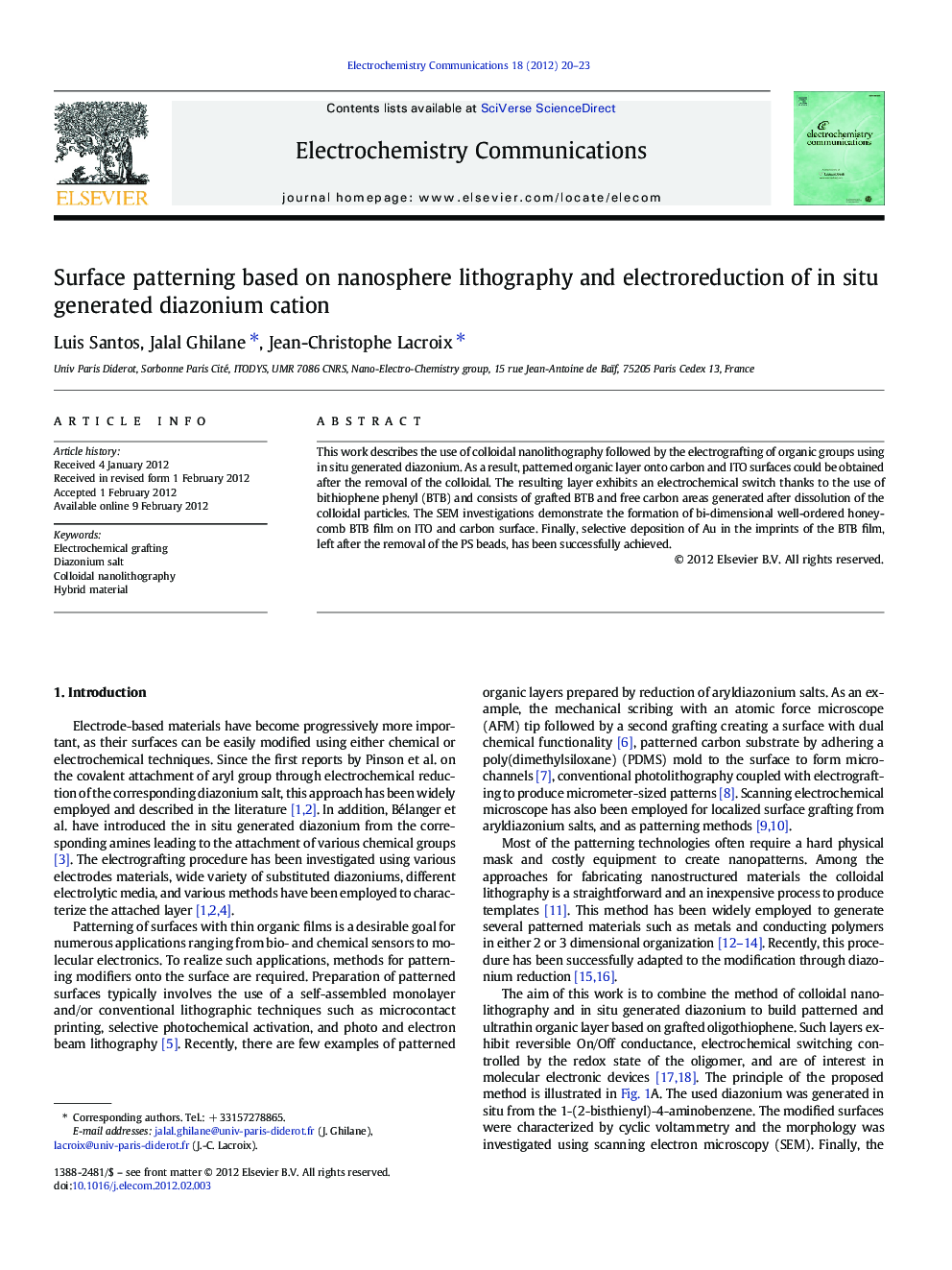| Article ID | Journal | Published Year | Pages | File Type |
|---|---|---|---|---|
| 179810 | Electrochemistry Communications | 2012 | 4 Pages |
This work describes the use of colloidal nanolithography followed by the electrografting of organic groups using in situ generated diazonium. As a result, patterned organic layer onto carbon and ITO surfaces could be obtained after the removal of the colloidal. The resulting layer exhibits an electrochemical switch thanks to the use of bithiophene phenyl (BTB) and consists of grafted BTB and free carbon areas generated after dissolution of the colloidal particles. The SEM investigations demonstrate the formation of bi-dimensional well-ordered honeycomb BTB film on ITO and carbon surface. Finally, selective deposition of Au in the imprints of the BTB film, left after the removal of the PS beads, has been successfully achieved.
Graphical abstractFigure optionsDownload full-size imageDownload as PowerPoint slideHighlights► A patterned organic layer onto carbon and ITO surfaces has been generated. ► The method combines colloidal lithography and electrochemical grafting. ► A Bi-dimensional well-ordered honeycomb organic thin layer has been obtained. ► Selective deposition of Au in the imprints of the organic film. ► Formation of well-ordered hybrid layer.
